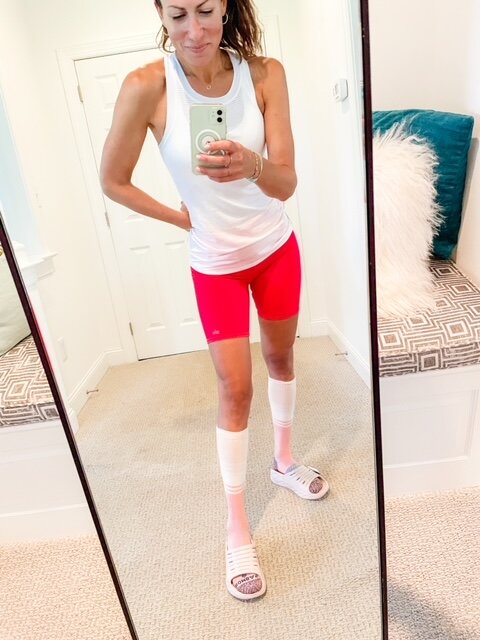It’s Not About Cute Footwear
I had no clue that recovery shoes were a thing until I was recently chatting with a friend who is training for her 9th marathon. She told me that her recovery shoes are a game changer while she trains and post race. I have never run a full marathon but I have done a few half marathons. And, at the end of each half, it’s always my feet that are in the most pain. So I can see how immediately stripping those sneakers that have carried you for the past 13 miles and putting on shoes that hug and cushion your feet can be a popular thing!
RECOVERY SHOES
I have always put so much into what will go on my feet during the race and have not given much thought as to what should go on my feet after the race. The goal of a recovery shoe is to be breathable, lightweight, cushioned and supportive. And the benefits are not only to your feet but extend to your ankles, knees and back, too.
While I have been doing some research for this article, I discovered that there are so many different types of recovery shoes on the market. Some shoes that I didn’t even know where actually recovery shoes— i.e. Birkenstocks. There are recovery slides, flops, clogs and full shoes. Reviews seem to favor slides because they allow your feet to breathe. But, I would think it’s pretty personal. For me, the idea of pillows embracing my entire foot sounds like post-race paradise. But to be fair, I decided to try a slide, a clog and a full shoe.
Ok, be prepared. These babies are not cute. But this is an instance where it’s not at all about fashion. Recovery shoes are anything but cute, especially on my size 9 foot!
The Oofo Recovery Clog is the real deal. It’s the shoe the hardcore runners opt for. Yeah, it’s definitely not the cutest of the bunch but the benefits outweigh the look. The thick soles of these shoes absorb the impact on your feet and joints. While these are great for runners, others that are on their feet all day, like nurses, doctors and teachers, swear by them, too.
I am a fan of these slides from Hoka. First off, they aren’t quite as tough on the eyes as some of the other options. This color reminds me of pink clouds— and that’s exactly what I feel like I am walking on when they are on my feet. The are cushiony, bouncy and have a bumpy texture for the bottoms of my feet to enjoy when I am wearing them.
These are the women’s version but there is a men’s version of the Hoka slide, too.
Do not be deceived— this is not a Hoka running sneaker. This is the Hoka Ora Recovery Shoe. And it almost looks like a regular Hoka sneaker, right? After all, Hoka has all of that foam technology in their running sneakers. So it makes total sense that their recovery sneaker would look similar. These gave me the most immediate hugging-comfort feel. Could I even pull off wearing them on the street like normal sneakers? Maybe?
COMPRESSION SOCKS
In addition to recovery shoes, compression socks play a significant role in foot recovery. In fact, studies show that wearing recovery socks immediately following your event cuts your overall recovery time significantly. Compression socks support your feet and legs, essentially acting like a weighted blanket. They improve blood flow and reduce pain and inflammation.
There is much more to consider when selecting recovery socks. These socks have various levels of compression. Using a mmHG scale (a medical measurement of millimeters of Mercury): mild compression is 8-15 mmHG; medium compression is 15-20 mmHG; firm compression is 20-30 mmHG and extra firm compression is 30-40 mmHG. Levels beyond that require a prescription and are used for medical conditions only. Unsure what all of this means? 20 mmHG is a good place to start. I ordered a mild and a firm compression sock to test out.
These are the medium compression socks from Bombas. They measure 15-20 mmHg in compression and feel like a soft hug on my feet. I would wear these more regularly, after runs for added comfort, and even in my ski boots.
These are the next level of compression- 20-30 mmHG- from Bombas. They have strong compression. These socks give my foot a much tighter hug. I would wear these traveling or immediately after a race.
Some recovery socks have gradient compression, which offer the most pressure at the ankle and decrease up the leg. Other considerations include the type of fabric, the level of breathability and the amount of cushion. Like all athletic garments, socks can be moisture wicking and made of a blend of performance fabrics including spandex, bamboo, cotton, wool.
So what am I keeping?
It’s a look, for sure.
I have to keep the Hoka recovery slides because all three of my children put these on and wouldn’t take them off. Kids tend to know a thing or two about comfort. I actually don’t mind the look of these either. I feel like I will get the most use from the slides because they are so easy to wear. I even wore them after tennis last night. And, I am keeping both levels of compression socks. The firmer socks will be better post race but I plan to wear these mild compression socks more regularly.
Know someone who may benefit from learning about recovery footwear? Share this article with them!
*This article contains affiliate links. When you click on some of the links, I may receive a very small commission at no additional cost to you. I only write about products that I genuinely use and love.








